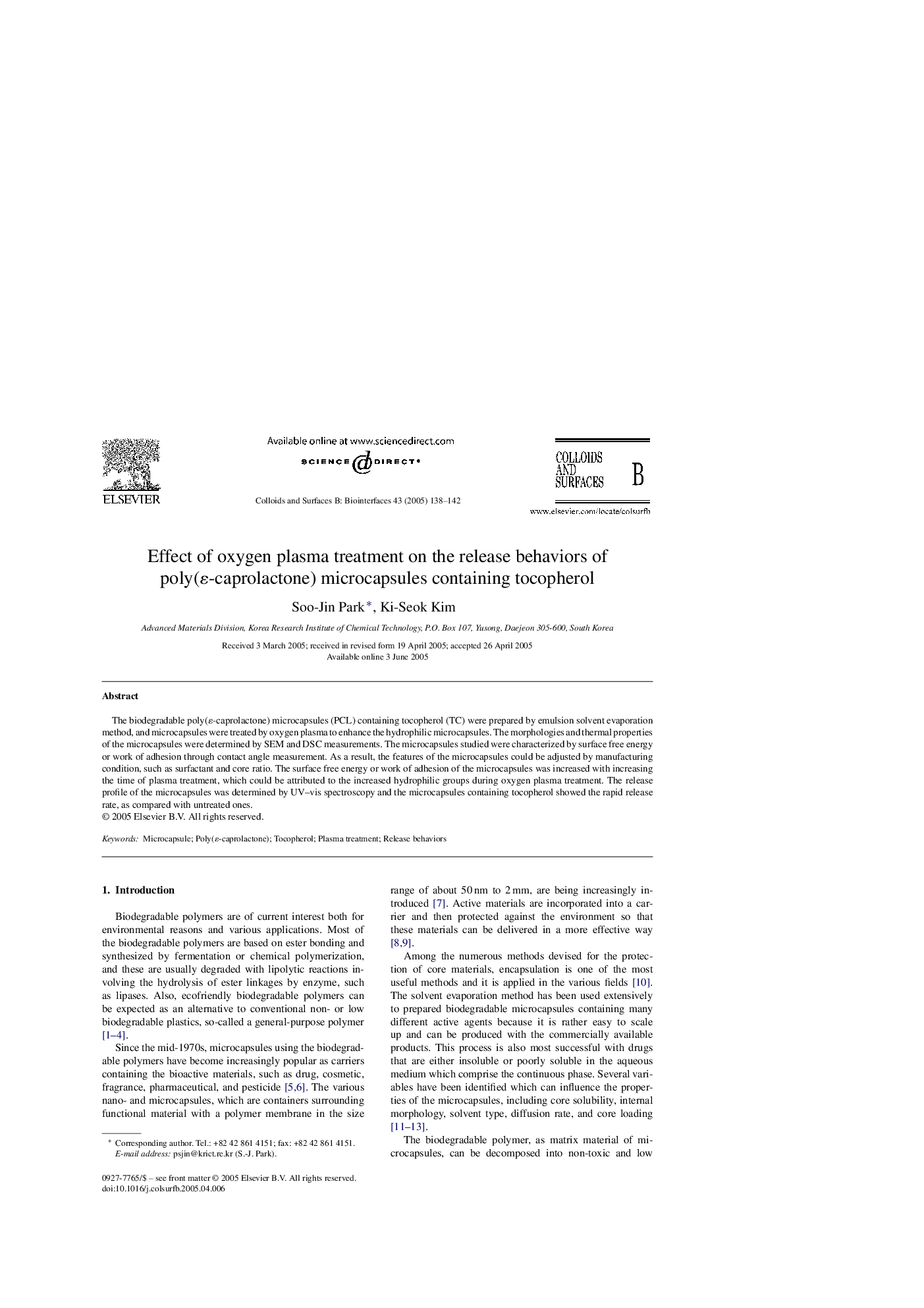| Article ID | Journal | Published Year | Pages | File Type |
|---|---|---|---|---|
| 9678349 | Colloids and Surfaces B: Biointerfaces | 2005 | 5 Pages |
Abstract
The biodegradable poly(É-caprolactone) microcapsules (PCL) containing tocopherol (TC) were prepared by emulsion solvent evaporation method, and microcapsules were treated by oxygen plasma to enhance the hydrophilic microcapsules. The morphologies and thermal properties of the microcapsules were determined by SEM and DSC measurements. The microcapsules studied were characterized by surface free energy or work of adhesion through contact angle measurement. As a result, the features of the microcapsules could be adjusted by manufacturing condition, such as surfactant and core ratio. The surface free energy or work of adhesion of the microcapsules was increased with increasing the time of plasma treatment, which could be attributed to the increased hydrophilic groups during oxygen plasma treatment. The release profile of the microcapsules was determined by UV-vis spectroscopy and the microcapsules containing tocopherol showed the rapid release rate, as compared with untreated ones.
Related Topics
Physical Sciences and Engineering
Chemical Engineering
Colloid and Surface Chemistry
Authors
Soo-Jin Park, Ki-Seok Kim,
